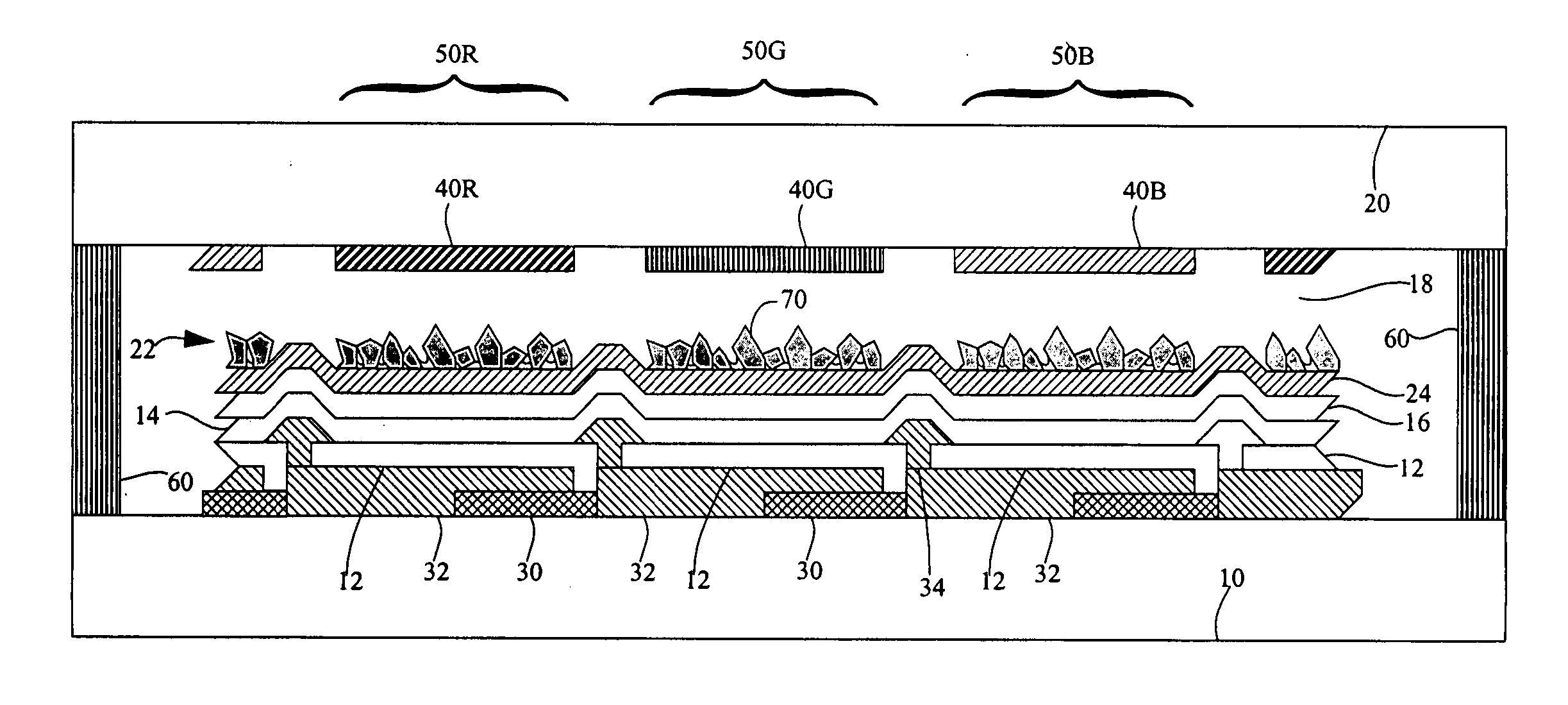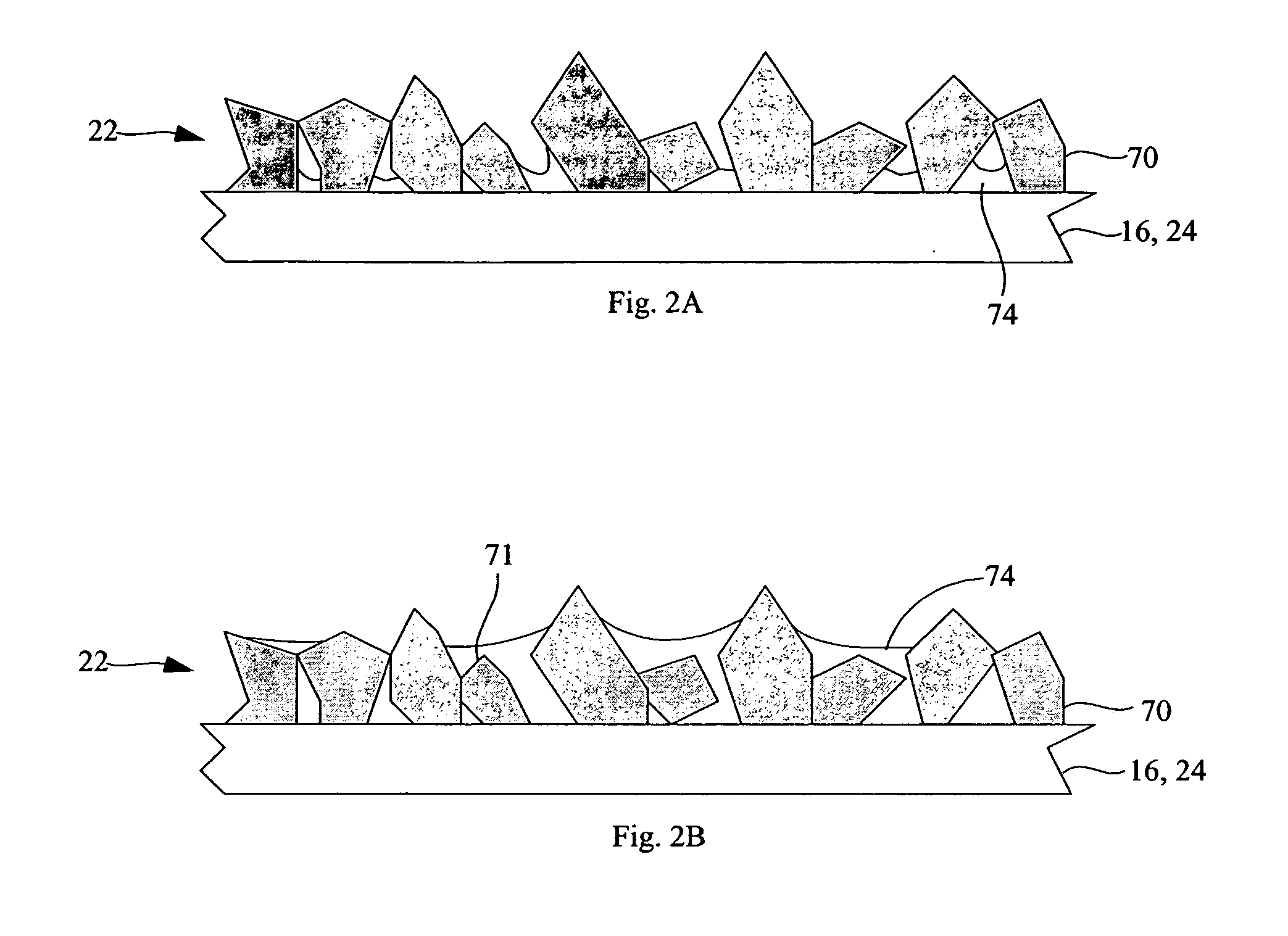OLED device having improved light output
- Summary
- Abstract
- Description
- Claims
- Application Information
AI Technical Summary
Benefits of technology
Problems solved by technology
Method used
Image
Examples
Embodiment Construction
[0028] Referring to FIG. 1, in accordance with one embodiment of the present invention, a top-emitting organic light-emitting diode (OLED) device, comprises a substrate 10; an OLED comprising a reflective electrode 12 formed on the substrate 10; one-or-more layers 14 of organic light-emitting material formed over the reflective electrode 12; and a transparent electrode 16 formed over the one-or-more layers 14 of organic light-emitting material; a light-scattering layer 22 having a rough surface formed over and in contact with the OLED; a cover 20 affixed to the substrate 10 forming a gap 18 between the cover 20 and the light scattering layer 22; and wherein the gap 18 is a vacuum or the gap 18 is filled with a relatively low-refractive index gas and the light-scattering layer 22 comprises a plurality of relatively high-refractive index light-scattering transparent particles 70 projecting into the gap 18 without contacting the cover 20 and further comprising an adhesive binder in con...
PUM
 Login to View More
Login to View More Abstract
Description
Claims
Application Information
 Login to View More
Login to View More - R&D
- Intellectual Property
- Life Sciences
- Materials
- Tech Scout
- Unparalleled Data Quality
- Higher Quality Content
- 60% Fewer Hallucinations
Browse by: Latest US Patents, China's latest patents, Technical Efficacy Thesaurus, Application Domain, Technology Topic, Popular Technical Reports.
© 2025 PatSnap. All rights reserved.Legal|Privacy policy|Modern Slavery Act Transparency Statement|Sitemap|About US| Contact US: help@patsnap.com



